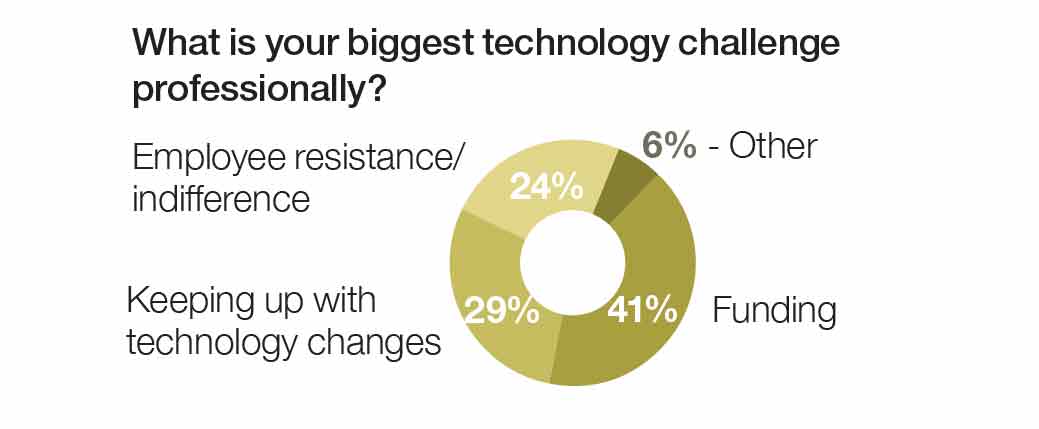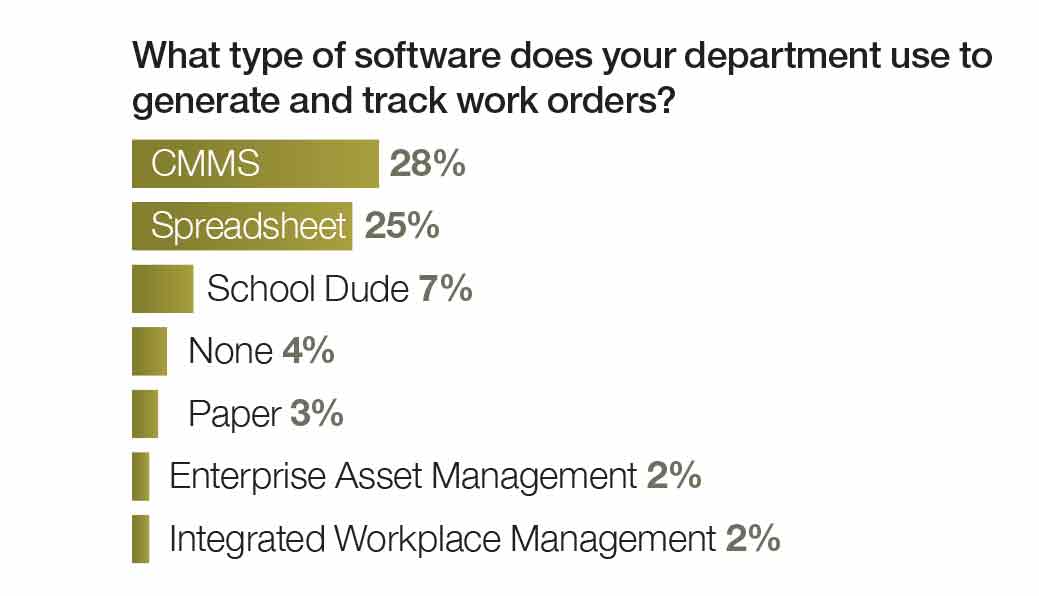Survey: Funding Ranks as Toughest Roadblock to Adopting Mobile Technologytest
By Dave Lubach, Associate Editor
April 2016
When asked about the primary challenges managers face when trying to implement mobile technology into their departments, the most popular response — 41 percent of respondents — was funding.
“Our executive administration was reluctant to spend shrinking university funds on some technology upgrades during and for some time after a financial crisis,” says Don Turner, director of facilities planning, maintenance, and construction at the University of West Florida in Pensacola. “Our software has needed to be upgraded for a few years, but no funds were appropriated for it. However, one of my action items this fiscal year is to evaluate our current software and other software options and recommend a funding request for an upgrade.”
Among the other significant challenges for managers remains trying to keep up with technology changes, say 29 percent of managers. The indifference and resistance of technicians willing to embrace new technology also serves as a roadblock, say 25 percent of managers.
“Skilled and unskilled laborers frequently are reluctant to embrace new technology simply because it’s unfamiliar to them,” Turner says. “No one wants to be made to look stupid, and many service technician-level staffers may be more sensitive to that perception than others.
“Technology has made my work far easier and more productive, so I typically embrace new innovations. I still experience a learning curve, but that’s a small price to pay for the increased productivity that usually results from what is learned.”
Western Michigan University in Kalamazoo first implemented mobile technology with PDAs in 2006 and upgraded to iPads in 2013. The university went paperless upon completing the transition to iPads. During the transition, the university saw a mix of employees at different stages of the technology spectrum.
“I don’t think the move to mobile is a one-size-fits-all transition,” says Becca Bruystens, a maintenance manager with Western Michigan. “The success depends greatly on the staff and management’s mindset. With our staff, I felt that about half of them were familiar and fairly comfortable using the iPads when we deployed them. The other half were very new to using this type of technology and needed very basic step-by-step directions on how to do all functions. There were a few individuals who were very comfortable and picked up all functions quickly.”
Not all of the challenges related to embracing new technology and products fall on the technicians.
“There is our (managers’) lack of experience with technology,” DuPlessis says. “And not just technology but our own lack of expertise. This isn’t the main language for most of us, and on top of that, we’re not always sure what the best solution is. Is it an iPad, or something else?
“We ran into a couple of initial roadblocks and difficulties, so we got hold of our instructional technology department, and they walked us through a few solutions and showed us a few solutions we could use. We ended up using Google drive because we have unlimited data storage which in a public school district is fantastic.”
Once managers learn more about new technologies and their benefits, another challenge is to weed out what departments truly need and what they do not and make wise purchasing decisions.
“A lot of times, people get fired up and just want to buy the technology without necessarily considering what each department does,” DuPlessis says. “Our building automation technicians, we don’t give them iPads because the system we use is Windows-based and requires a different operating system. For them, we get Netbooks or laptops. We still have to consider the needs of each individual or group employee type before we start deploying (products).”

